Results 6,441 to 6,450 of 12096
Thread: Anandtech News
-
11-03-16, 08:15 AM #6441
Anandtech: Huawei Munich Press Event Live Blog (starts 2pm CET / 9am ET)
Following the launch of the Kirin 960 SoC, the first announce ARM's Cortex A73 cores and G71 GPU cores, we've been shipped to Munich to discover a new Huawei device (which may or may not have it in). Live blog starts at 9am ET, so tune in then and we'll have the information as it comes through.
More...
-
11-03-16, 09:18 AM #6442
Anandtech: Huawei Mate 9 Launch and Hands On: Kirin 960, 5.9in FHD, Daydream VR
Today in Munich Huawei is releasing the covers on their new flagship smartphone. The Mate 9 follows the 8 and 7 as the leading devices under the Huawei brand, each featuring the latest generation HiSilicon Kirin SoC announced at roughly the same time. The SoC in this one is the Kirin 960, as we detailed a couple of weeks ago, and features the first outing of ARM's new Cortex A73 CPU cores as well as the first public implementation of the new ARM Mali-G71 graphics core. Huawei has paired this will an all new CDMA capable Category 12 integrated modem with quad carrier aggregation (4CA) and 4x4 MIMO (at 2CA). The Mate 9 itself is the SoC with an aluminum design with a 5.96-inch Full HD (1920x1080) LCD display, EMUI 5.0, dual Leica rear cameras, and Google DaydreamVR support.
As mentioned in our Kirin 960 piece, Huawei (in the Mate 9) is advertising +18% performance on the CPU and +180% on the GPU compared to the Kirin 950 in the Mate 8. The CPU uplift comes from the move to A73 cores over A72, and the GPU is from a doubling from MP4 to MP8 on the GPU along with a new GPU architecture, Bifrost. The CPU and GPU are connected with a new lower power interconnect, ARM's CCI-550, which was promoted as part of ARM's CCI-500 family as offering better efficiency and lower power than the previous generation CCI-400 series. Andrei and Ryan's pieces on both the A73 'Artemis' microarchitecture and the G71 'Bifrost' architectures are well worth the read. For the Mate 9, Huawei is using TSMC's latest 16FFC process - this is a lower cost variant of the original 16FF+ and should be the same 16FFC we see in Apple's A10 cores. Numerous outlets have compared the fact that Huawei is launching a 16nm flagship while others are preparing to launch 10nm devices, however if those are indeed 10nm, Huawei still has 4-5 months (Nov to March) before these devices hit the market and we'll see how they match up in due course.
Over the past twelve months, the two key devices in Huawei's portfolio have been the Mate 8 and the P9, so naturally one would expect the dual camera feature of the P9 to migrate to the flagship Mate series device. The Mate 9 has two cameras, and rather than using the dual 12MP sensors in the P9, Huawei is using a 20MP color camera in one and a 12MP black and white camera for the other. The color camera will have optical image stabilization, while both with use up to 4K EIS via the internal DSP. With the dual camera design, Huawei is advertising effects such as post processing bokeh, and a 'hybrid 2x zoom' function which crops the 20MP image to a 12MP image to give the effect of zoom. Leica is still practically involved with the branding, apparently assisting with the lenses and the software. Also into the Mate 9 repertoire are a series of effects from previous generations of flagships, such as light painting, but the new device will support Beauty Mode recording and slo-mo recording up to 240fps in 720p/HD mode (although not beauty and slo-mo at the same time). Both rear cameras are set at f/2.2, while the front camera is an 8MP with autofocus and f/1.9.
For the display, Huawei is promoting a 5.96-inch Full-HD (1920x1080) LED display with a 1500:1 contrast ratio and a tailored '2.5D' glass finish. Color gamut is officially promoted as 96% NTSC. The display will implement the new EMUI 5.0, which as part of our discussions with Huawei's design team is meant to be geared towards ease of use with most applications designed to be 3 clicks away or less. EMUI 5.0 will also feature a new design philosophy centered on blue and white, citing that the minimalist environment and high contrast mirrors a more concise and relaxing user experience. Given Huawei's tendency to ship recent devices with blue screens over the past couple of years (either by chance or design), it seems that blue is here to stay. The Mate 9 does feature a low blue light mode to aid using the device at night, and given previous iterations of this feature it typically adjusts the software LUT and jacks up the greens to give a 'warmer' feel. As a flagship device commanding a flagship price, it will be interesting to see if Huawei has taken steps towards per-unit color calibration similar to its main competitors.Huawei Mate Series Mate 7 Mate 8 Mate 9 SoC HiSilicon Kirin 925
4x A7 @ 1.3 G
4x A15 @ 1.8G
T628MP4 @ 0.6GHiSilicon Kirin 950
4x A53 @ 1.8 G
4x A72 @ 2.3 G
T880MP4 @ 0.9 GHiSilicon Kirin 960
4x A53 @ 1.8 G
4x A73 @ 2.4 G
G71MP8 @ 0.9 GRAM 2GB/3GB 3/4GB LPDDR4 4 GB LPDDR4-1800 NAND 16GB
32GB
eMMC 4.032GB
64GB
128GB
eMMC 5.064 GB
128 GB
UFS 2.1Display 6" 1080p LCD 6” 1080p JDI IPS-Neo LCD 5.96" 1080p LCD Modem LTE Cat 6 2G/3G/4G LTE Cat 6 2G/3G/4G LTE Cat 12
w/CDMADimensions 157 (h) x
81 (w) x
7.9 (d) mm157.1 (h) x
80.6 (w) x
7.9 (d) mm156.9 (h) x
78.9 (w) x
7.9 (d) mmWeight 185 g 185g ~190g Camera 13 MP
f/2.0
1080p30 video16MP ( 4608 × 3456 )
Sony IMX298
1/2.8" w/ 1.12µm pixels
F/2.0 aperture, ?mm eq.Dual Rear Camera
#1 20MP RGB w/OIS, f/2.2
#2 12MP B/W w/EIS, f/2.25MP
f/2.4
720p videoFront Facing Camera
8MP ( 3264 × 2448 )
Sony IMX179
1/3.2" w/ 1.4µm pixels
F/2.4 aperture, 26mm eq.Front: 8MP w/AF
F/1.9Battery 4100 mAh 4000mAh (15.2 Whr) 4000 mAh OS Android 4.2.2
with Emotion UIAndroid 6.0
with EmotionUI 4.0Android 7.0
with EmotionUI 5.0Connectivity 802.11a/b/g/n
2.4 & 5 GHz
BT 4.0
GPS/GNSS
DLNA802.11a/b/g/n/ac
2.4 & 5GHz
BT 4.2,
GPS/GNSS,
DLNA, NFCUSB 2.0 microUSB 2.0 microUSB 2.0 Type-C SIM Size MicroSIM +
NanoSIM (microSD)NanoSIM +
NanoSIMNanoSIM +
NanoSIM (microSD)Launch MSRP 340 Euro 449-659 Euro ?
The Mate 9 will be available in two storage variants, either 64GB or 128GB of UFS 2.1, and each device has 4GB of DRAM. In combination with the new version of EMUI, Huawei has promised a lower base for memory occupation (i.e. OS DRAM residency, which seemed oddly high with the Mate 8). For additional storage, the dual Nano-SIM design will allow for a single memory card in the SIM 2 slot, supporting up to 256 GB. Huawei will promote that both SIM slots, depending on the region, will be able to support 4G at the same time, rather than the 4G/GSM combinations in the past. This will be interesting to see the effect on battery life, with the rated 4000 mAh battery.
The 4000 mAh battery is being quoted as an 'all-day' battery, and Huawei is implementing a 'SuperCharge' scheme using an internal controller in both the smartphone and the charging device itself. Rather than the 9V/2A fast charging combinations, Huawei says that SuperCharge uses on-the-fly dynamic voltage adjustments from 3.5-5V with 5A which can offer 3.5 hours of video playback on 10 minutes of charge. As the charger/wallwart being used also has a controller IC implemented, this charging mode can only occur with branded charging devices but this also allows the ICs to communicate regarding temperatures. Charging at high current invariably adds in temperature through losses, and using internal (non-user accessible) phone sensors the temperature of the smartphone can be monitored and charging adjusted as needed. As part of Huawei's presentation, they are stating that the fast charging temperature of the Mate 9 is better than most (if not all) current high-end smartphones on the market today, offering 58% charge in the first 30 minutes as well. Huawei also clarified that no voltage transformation happens on the phone, and cables adhering to the specification will also be required (the controller IC, or 'SuperCharge Processor/SCP', will adjust for the ohmic capacity of the cable). Huawei will also bundle a supercharger for cars as well with the Mate 9.
Connectivity is via a USB 2.0 Type-C connection on the bottom of the phone, and Wi-Fi support is dual-band (2.4 GHz + 5 GHz) 802.11ac 2x2 with Wi-Fi Direct support. This module also supports Bluetooth 4.2 and Low Energy, and with this Huawei is also adding NFC. Next to the Type-C are two speaker grills, and one of the promoted features is the use of four microphones to allow for better recording - one of the promoted software features is a meeting/interview recording mode with various algorithms in place to increase SNR based on input from the various microphones.
Having used the Mate 8 for at least six months at this point, I can feel it going slower and more antagonizing to switch apps (at times I multitask as if I'm at my desktop). Huawei has recognized that this is one of the pain points when using 'most' devices, so one of the features that Huawei is promoting with the Mate 9 is onboard machine learning, designed to calibrate and optimize the hardware as time goes on to reduce the impact of an aged system. This was described in the form of learning which apps are frequently used and when, and then learning to optimize the storage for contiguous loading as well as prioritize DRAM accesses and CPU instructions for those important apps. Part of this means that applications that have priority will in effect take over up to seven cores on the device, with the remaining cores for background processing. The priority application thus gets more chances to affect the DRAM controller and request storage access, which Huawei says are now also part of the optimization to limit data fragmentation as time goes on and the device is used.
We were able to determine that the machine learning part is both training and inference, and rather than learn through fixed function or specialized hardware, all the computation would be on the cores of the SoC. At present Huawei does all of the analysis on the device, and has not implemented a mechanism for off-site learning or device-to-device learning, in the same way that an autocorrect library might be downloaded to new user devices with certain apps. Thankfully I would expect that the learning and inference of these 'optimization' algorithms is fairly minimal in terms of extra SoC load for day-to-day, so ideally it should not have a hit on battery life.
On EMUI 5.0 again and Huawei is reintroducing their version of the app drawer to their design. The EMUI 4.1 implementation was distinctly iOS like, with Huawei previously citing that customers enjoyed the design and it provided a combination of ecosystems between available markets. Despite this, customer feedback on an Android device is typically geared towards various features, such as having the app drawer or enabling the ability to have icons for the same app on different home screens. With EMUI 5.0, through the settings, users can enable these features as they won't be the default setting. EMUI 5.0 on the Mate 9 will also still feature all the knuckle gestures and features as in the Mate 8/S and P9, although there is no Force Touch. We were told that EMUI 5.0 has the Force Touch software modules at its core; however it will be up to the device design to support it.
EMUI 5.0 also expands both dual window and dual app sign-in capabilities. Evernote, WhatsApp and Skype will now support dual window, with WhatsApp, Line and WeChat supporting dual-app sign-in. The latter is an interesting implementation allowing users to have two accounts for these messaging applications on the same device, where normally only one is allowed (having a messenger for personal and for work on one device has been regular feedback for Huawei). For upgrading to a new phone, Huawei has also evolved their Huawei Share application allowing users to transfer all contacts, messages and apps directly with phone-to-phone communication rather than via the cloud. It was remarked that Huawei doesn't offer a cloud option, so phone-to-phone is the only way in that regard: Huawei responded saying that cloud is difficult, however the first roll-out of a cloud-based Huawei Share will be in China in the future. There are, as one might expect, inherent country-by-country bylaws with this level of cloud services which Huawei is still in the process of understanding.
Gallery: Mate 9



Huawei will launch the Mate 9 in five colors (region dependent): space gray, moonlight silver, champagne gold, mocha brown and ceramic white.
Hands On
While talking specifications, software and features are interesting (and somewhat easier as a writer), handling a device is a little different. Huawei has kept the curved feel of the Mate series, and to a certain point there is more of a curve to it after some feedback that the Mate 8 was too shallow. As a large smartphone user, I feel having the curved back along with the large screen is a plus - having used the Honor 8 by comparison with its glass rear feels a little odd and uncomfortable. Along with the rear is the fingerprint sensor, which Huawei has made smaller and moved nearer to the cameras.
There are still only five profiles available for fingers for smartphone recognition, which annoys me slightly. I have gotten to the point where I need two fingers on both hands to be registered at different angles, and the Mate 9 will lock the fingerprint sensor after five failed attempts (rather than 10+ on the Mate 8) requiring a PIN to get in. That being said, I can't fault the fingerprint sensor for timing - Huawei has some of the fastest recognition I've seen (even compared to the 6P), which means repeated attempts are fairly quick anyway. The fingerprint sensor now also supports some gestures which can be configured in the settings.
Within the first few moments of handling the device, I did notice a slight design change for the power/reset buttons. On the Mate 8 / Nova Plus / Honor 8, it was always listed as a 'feature' that the power button had a different texture to make it easier to find because both the power/reset buttons were on the same side. With the Mate 9 this feature goes away, leaving two buttons which feel identical aside from their size. I asked Huawei about the reason for the change, but unfortunately I have not had a response yet as to who decided it and why.
As with all new phones, performance in the OS is snappy and seems relatively fluid. As part of the discussions, Huawei was keen to mention that some OS tricks have been employed to improve user experience and the perception of performance though 'non-noticeable' adjustments. I think I spotted one of these - in the gallery app, when scrolling through photographs, in order to avoid a state where the user is scrolling fast and images aren't loading quickly, Huawei will skip a frame or two in the UI to ensure an image preview is always present. To be honest, most phones will skip frames when doing heavy IO processing, so this isn't in itself surprising - but the fact that it is being mentioned as a 'feature' to improve UX is odd. At some point skipped frames for UX will be a thing of the past, though I can see why IO would be an obvious bottleneck.
We've covered features like knuckle gestures and light painting in previous Huawei reviews, and these are also present here. The camera mode on the Mate 9 gets a small revamp, with most features now being offered as slide left/right followed by buttons, rather than a single button for settings. Huawei was keen to promote its new false touching algorithm whereby users might accidentally press the display when taking a photo and draw the focus away. It's a nice feature and somewhat necessary with larger smartphones, and yes it the algorithm isn't fool proof, but I'd like to cite issues I've had with the Mate 8 and false touching when covering events, so even if the algorithm is early stage it can be marked as a positive. I'll leave the smartphone dual camera analysis for Matt's full review of the device, but I can confirm it takes pictures.
Some of Huawei's claims will be difficult to test in a full review, such as the long-term performance metric gathering, purely because of the time required and the need for a baseline on the same device receiving the same application profile trace. However, the A73/G71 combination in the SoC is going to be an expected performance matchup through 2017, and we'll be keen to see how the updated custom cores from the other major smartphone manufacturers shape up. If we get time with a device after the announcement, I'll try and run some basic benchmark numbers.
More...
-
11-03-16, 09:18 AM #6443
Anandtech: Huawei Mate 9 Porsche Design Launched: Curved 5.5-inch 1440p, Kirin 960, 6
Along with the Mate 9 launch, Huawei's event in Munich today featured a second higher-specification variant with branding tied in with one of the world's premium automobile and design brands. The Mate 9 Porsche Design is a dual-curved 5.5-inch display running a '2K' (2560x1440) resolution smartphone using the latest Kirin 960 SoC, featuring 6GB of DDR4, 256GB of storage via UFS 2.1, and come in at a hefty $1300 price tag. The device is intended for EMEA/APAC markets, not the US.
Despite sharing the Mate 9 name, only a few parts are shared in common between the regular model and the Porsche Design (PD). There's a move down in screen size (5.96in to 5.5in), a curved screen, an increase in resolution (1080p to 1440p), 50% more memory, 2x more storage, and 2x the price. The underlying SoC is the same, as well as battery size, software, audio, fast charging and other features.
The link up with Porsche, we're told, is more than just a brand. Apparently Porsche are on board with the device design, hardware and software, as well as marketing and distribution (I have a feeling it might be sold alongside vehicles). This is part of Huawei's recent brand strategy, linking devices with known names such as Leica, Harmon/Kardon, and now Porsche to show that it can be a major player in the premium smartphone space. This goes along with their goal to be the #1 smartphone brand in due course.Huawei Mate 9 Series Mate 9 Mate 9 Porsche Design SoC HiSilicon Kirin 960
4x ARM Cortex A53 @ 1.8 GHz
4x ARM Cortex A73 @ 2.4 GHz
ARM Mali-G71MP8 @ 900 MHzRAM 4 GB LPDDR4-1800 6GB LPDDR4 NAND 64/128 GB UFS 2.1 256GB UFS 2.1 Display 5.96" 1080p LCD 5.5" 2560x1440p Modem 2G/3G/4G LTE Cat 12
w/CDMADimensions 156.9 (h) x
78.9 (w) x
7.9 (d) mm152 (h) x
75 (w) x
7.5 (d) mmWeight ~190g 169g Camera Dual Rear Camera
#1 20MP RGB w/OIS, f/2.2
#2 12MP B/W w/EIS, f/2.2Front: 8MP w/AF
F/1.9Battery 4000 mAh OS Android 7.0
with EmotionUI 5.0Connectivity 802.11a/b/g/n/ac
2.4 & 5GHz
BT 4.2,
GPS/GNSS,
DLNA, NFCUSB 2.0 Type-C 3.0 Type-CSIM Size NanoSIM +
NanoSIM (microSD)Launch MSRP ? ?
One thing to note about the Mate 9PE is that the battery is the same as the Mate 9, meaning that at a higher resolution I would expect the battery life of the 9PE to be lower than the 9. With the curved edges, there are more software adjustments that have to be made on top of the OS, which is going to be an interesting look compared to how current curved displays operate. The recent removal of a popular curved smartphone from retail has offered an opportunity that Huawei wants to take to appear as a premium smartphone brand - I'm not necessarily sure a $1300 device is the way to do that, but we will see.
Gallery: Mate 9 Porsche Design





More...
-
11-04-16, 07:22 AM #6444
Anandtech: ZOTAC ZBOX MAGNUS ERX480: SFF PC with Intel Core i5, AMD Radeon RX480, USB
ZOTAC has introduced a new small form-factor system that integrates AMD’s Radeon RX 480 graphics as well as an Intel quad-core Core i5-6400T. The compact PC is designed to drive up to four 4K displays at once and can be used both for gaming as well as for productivity applications that demand multiple monitors. In fact, the manufacturer officially positions the system as an entry-level machine for VR gaming.
The ZOTAC ZBOX MAGNUS ERX480 PC is powered by Intel’s Core i5-6400T processor (4C/4T, 2.2 GHz/2.8 GHz, 6 MB LLC cache, 35 W TDP) as well as a custom LGA1151 motherboard with two slots for DDR4-2133 SO-DIMM memory. AMD’s Radeon RX480 MXM module, one M.2-2280 slot for a SATA SSD, a SATA connector, two Gigabit Ethernet controllers, a 802.11ac Wi-Fi/BT 4.2 module and a USB 3.1 controller make up the other key features.
When it comes to connectivity, the ZBOX MAGNUS ERX480 is an example of reasonable set of I/O ports. The system features two HDMI 2.0, two DisplayPort 1.3, two GbE, two 3.5mm audio, two USB 3.0, two USB 2.0, one USB 3.1 Gen 2 Type-A and one USB 3.1 Gen 2 Type-C connectors. In addition, the PC has a 3-in-1 card reader (SD/SDHC/SDXC UHS II). Users with 5.1- or 7.1-channel speaker systems will have to use an external USB audio solution however.
From performance point of view, the ZBOX MAGNUS ERX480 meets the minimum requirements that Oculus VR set for games compatible with the Oculus Rift VR headset back in the first half of 2015: it has a quad-core CPU along with AMD’s Radeon RX 480 GPU, supports up to 32 GB of DDR4 memory and can be equipped with 2 drives (1x M.2 and 1x 2.5"). If game developers follow recommendations of Oculus VR, the MAGNUS ERX480 should run VR titles for Oculus VR with decent framerate.
Speaking of dimensions, it should be noted that like other MAGNUS-series PCs, the ERX480 is not as tiny as Intel’s NUC, but it is not as large as some other models in Zotac's lineup. The relatively small size of the new compact PC from ZOTAC is a result of the company’s decision to use relatively low-power components (the manufacturer claims that the power draw of the ERX480 is 160 W) and air-cooling. We do not know whether the PC gets noisy under high loads, but this is a possibility as the system uses two blowers.ZOTAC ZBOX MAGNUS ERX480 Specifications ZBOX MAGNUS
ERX480
(barebones)ZBOX MAGNUS
ERX480 PLUS
(w/ DRAM+M.2)ZBOX MAGNUS
ERX480 WINDOWS
(w/ DRAM+M.2)CPU Intel Core i5-6400T (4 cores, 2.2 GHz/2.8 GHz, 6 MB LLC, 35 W) PCH unknown 100-series Graphics AMD Radeon RX480 at 1050 MHz:
2304 stream processors
144 texture units
32 ROPs
256-bit memory interface
4 GB of GDDR5 7 GT/s memoryMemory Two SO-DIMM slots, up to 32 GB of DDR4-2133 8 GB of DDR4-2133 (one module) Storage M.2 SATA
1x SATA 6 Gbps 2.5"120 GB M.2 SATA SSD
1 TB 2.5" HDDWi-Fi 802.11ac + BT 4.2 Ethernet Two Gigabit Ethernet with RJ45 connector Display Outputs 2 × HDMI 2.0
2 × DisplayPort 1.2Audio 3.5 mm audio in and audio out USB 2 × USB 2.0 Type-A (480 Mbps)
2 × USB 3.0 Type-A (5 Gbps)
1 × USB 3.1 Type-A (10 Gbps)
1 × USB 3.1 Type-C (10 Gbps)Other I/O 3-in-1 card reader (SD/SDHC/SDXC UHS II) Dimensions 210 mm × 203 mm × 62.2 mm
8.27 × 7.99 × 2.45 inchesPSU External OS - Windows 10 Home
ZOTAC traditionally plans to offer three versions of the MAGNUS ERX480: a barebones with just the CPU and GPU installed; a Plus version with a 8 GB DDR4 memory module, a 120 GB SATA M.2 SSD as well as 1 TB HDD; and a Windows edition with DRAM, storage and Windows 10 Home operating system pre-installed. The manufacturer does not disclose its MSRPs at this time, but claims that all the PCs will be available by the end of November.
Gallery: ZOTAC ZBOX MAGNUS ERX480: SFF PC with Intel Core i5, AMD Radeon RX480, USB-C





Related Reading:
- ZOTAC ZBOX CI523 nano Fanless Skylake-U mini-PC Review
- ZOTAC Announces VR GO Backpack PC with GeForce GTX 1070
- ZOTAC ZBOX MAGNUS ERX480 SFF PC Review - An Innovative VR-Ready Gaming Powerhouse
More...
-
11-04-16, 11:14 AM #6445
Anandtech: ADATA Ultimate SU800 SSDs in M.2 Announced: Entry-Level 3D NAND SSDs for L
This week ADATA expanded the lineup of its SSDs featuring 3D NAND memory by announcing its Ultimate SU800 drives in an M.2 form-factor. The new SSDs offer similar performance and features as the 2.5” Ultimate SU800 drives introduced earlier this year, hence, the key selling points of the newcomers is their relatively affordable price as well as compatibility with ultra-thin notebooks.
The ADATA Ultimate SU800 family of M.2 SSDs include models with 128 GB, 256 GB, 512 GB and 1 TB capacity (the largest one will hit the market a bit later than the others — it is not even listed on the manufacturer's web-site yet). Just like their 2.5-inch brethren, the new drives are based on Silicon Motion’s SM2258 controller (which has four NAND flash channels and LDPC ECC technology) as well as 3D TLC NAND flash memory produced by IMFT. The Ultimate SU800 M.2 SSDs use a SATA 6 Gbps interface and support a DRAM buffer as well as pseudo-SLC caching to maximize the writing speed of the drives.
Speaking of performance, ADATA claims that the higher-capacity Ultimate SU800 SSDs feature up to 560 MB/s read and up to 520 MB/s write speed, whereas the 128 GB model is a bit slower when it comes to writing (up to 300 MB/s). ADATA does not mention random performance of the SSDs as well as their power consumption, but the SM2258 controller in other devices is capable of up to 90,000 read IOPS and up to 80,000 write IOPS, which is good enough for client storage devices.
Since 3D NAND is made using larger process technologies than planar NAND flash memory, it naturally has better endurance and higher performance, which is why ADATA declares 2 million hours MTBF for its Ultimate SU800 M.2 SSDs, which is 0.5 million hours higher compared to 2D NAND-based drives. Nonetheless, the warranty period for the new storage devices is standard - three years.ADATA Ultimate SU800 M.2 Specifications Capacity 128 GB 256 GB 512 GB 1 TB Model Number ASU800NS38-
128GT-CASU800NS38-
256GT-CASU800NS38-
512GT-CASU800NS38-
1TT-CController Silicon Motion SM2258 NAND Flash 3D TLC NAND Sequential Read 560 MB/s Sequential Write 300 MB/s 520 MB/s Random Read IOPS Up to 90K IOPS Random Write IOPS Up to 80K IOPS Pseudo-SLC Caching Supported DRAM Buffer Yes, capacity unknown TCG Opal Encryption No Power Management DevSleep Warranty 3 years MTBF 2,000,000 hours MSRP $69.99 $84.99 $149.99 unknown
Meanwhile, prices of the Ultimate SU800 M.2 SSDs are $5 to $10 higher compared to the same products in a 2.5-inform-factor. ADATA plans to charge $69.99, $84.99 and $149.99 for 128 GB, 256 GB and 512 GB versions of its Ultimate SU800 SSDs. Since the new drives offer higher endurance and better performance than their predecessors, ADATA positions them above the existing TLC-based M.2 SSDs and reflects this in MSRPs. Eventually, the new drives will inevitably get more affordable, but today the manufacturer charges a small premium for 3D NAND-powered SSDs.
Gallery: ADATA Ultimate SU800 SSDs in M.2: Entry-Level 3D NAND SSDs for Laptops
Related Reading:
- ADATA Launches XPG SX8000: High-End M.2 NVMe SSD Featuring 3D MLC NAND
- ADATA Introduces Ultimate SU800 SSD: SMI Controller, 3D NAND, SATA Interface
- ADATA Introduces Premier SP550 SSDs in M.2 Form-Factor
More...
-
11-04-16, 01:57 PM #6446
Anandtech: ADATA SE730, SV620 and SC660 External SSDs Review
We have seen rapid developments in flash technology over the last few years. Performance has been going up at one end (with various new options for interfacing with the host), but, the costs have also been driven down at the other end of the spectrum. The appearance of TLC flash has led to lower costs as well as increased densities in flash-based storage devices (both SSDs and USB drives). MLC flash presents the best balance of performance / endurance and cost, while TLC-based drives are intended for the cost-conscious market segment. Back in July, ADATA introduced three external SSDs - the SE730 with a USB 3.1 Gen 2 Type-C interface, and the SV620 / SC660 with a USB 3.0 Micro-B interface. This review takes a look at how the three devices hold up in our rigorous benchmarking suite for direct-attached storage devices.
More...
-
11-04-16, 05:14 PM #6447
Anandtech: Nixeus NX-VUE27P Pro WQHD (2560x1440) Monitor Launched
Over the last four years, Nixeus has launched a number of products focused on the gaming market. While the initial focus was on high-resolution monitors, they have now started to include gaming keyboards (mechanical) and mice in their portfolio. In addition, they have also been at the forefront in supporting AMD's FreeSync variable refresh rate technology in their monitors. Last month, they introduced a 'Pro' version of their 27" WQHD (2560x1440) IPS monitor.
The new monitor will be sold under the NX-VUE27P model name, with the 'P' indicating that the professional market is being targeted. The 2560x1440 monitor supports 100% sRGB color gamut, while also claiming AdobeRGB support. Except for the latter aspect, the display of the Nixeus PRO Vue 27″ AH-IPS 2560×1440 Mac/PC monitor is identical to the Nixeus VUE27D that we reviewed back in late 2013. Given the review link, I will not go into the details of the brightness, contrast ratio, response time etc of the NX-VUE27P.
Unlike many of the vendors that we talk to, Nixeus is quite transparent about the hardware choices they made while designing the product. The panel model and the scaler can be easily found by anyone with access to the hardware, but, Nixeus saved us the trouble and indicated that the NX-VUE27P uses the same panel as that of the NX-VUE27D, the LG LM270WQ1-SDF1. While the NX-VUE27D had only a DisplayPort input (enabled via a MStar scaler), the NX-VUE27P adopts a more recent Novatek scaler that enables additional features - multiple display inputs (DL-DVI-D, DP 1.2, HDMI and VGA), and a mode that can activate the 8-bit + A-FRC feature of the panel ('10-bit' mode). This '10-bit' mode allows Nixeus to add an additional OSD option for AdobeRGB color gamut. Despite this option, the panel capabilities dictate that only around 78% of the AdobeRGB color gamut can be covered by the monitor.
The NX-VUE27P also has in-built stereo speakers and a 3.5mm audio jack (for use with VGA and DVI connections). The MSRP is $400, but the current street price seems to be around $390. The monitor carries a 2-year warranty.
Buy Nixeus NX-VUE27P Pro WQHD Monitor on Amazon.com
More...
-
11-07-16, 08:45 AM #6448
Anandtech: The ASUS X99-E-10G WS Motherboard Review: 10GBase-T Networking with Intel’
One significant motherboard update that has been drawn out over time has been the integration of 10 Gigabit Ethernet on consumer level motherboards, and specifically copper based 10GBase-T that is backwards compatible with the majority of home networks using RJ-45. While the traction of 10G is scaling in business and enterprise, cost remains a big barrier to home and prosumer networking, but also consumer based implementations. We recently posted a news update with the current 10GBase-T motherboards on the market, and this is the second review of that list: today we are testing ASUS' new high-end LGA2011-3 workstation refresh model, the ASUS X99-E-10G WS. The motherboard uses Intel’s latest 10GBase-T controller, the X550, which runs as a PCIe 3.0 x4 implementation.
More...
-
11-07-16, 08:45 AM #6449
Anandtech: Now Shipping: AMD Radeon Pro WX Series
Back in July AMD announced the Radeon Pro WX series. Part of a broader rebranding effort for AMD’s professional grade graphics cards – moving away from the FirePro brand and making everything part of the Radeon family – the WX series would also mark the first use of AMD’s latest-generation Polaris architecture in their pro cards. At the time of their announcement, AMD had not finalized the card specifications or launch date beyond Q4, but as of this week the cards are finally reaching AMD’s partners and retailers, and the final specifications are being released.
When AMD first announced these cards, they were targeting better than 2 TFLOPS, 4 TFLOPS, and 5 TFLOPS for the WX 4100, WX 5100, and WX 7100 respectively. The final specifications put the WX 4100 ahead of that, at 5.7 and 2.4 TFLOPS. However the WX 5100 ended up coming up a bit short of AMD’s goal; it tops out at 3.9 TFLOPS.AMD Workstation Video Card Specification Comparison WX 7100 W7100 WX 5100 WX 4100 Stream Processors 2304 1792 1792 1024 Texture Units 128 112 112 64 ROPs 32 32 32 16 Boost Clock ~1.24GHz 920MHz ~1.09GHz ~1.17GHz Memory Clock ? 5Gbps GDDR5 ? ? Memory Bus Width 256-bit 256-bit 256-bit 128-bit VRAM 8GB 8GB 8GB 4GB TDP 130W 150W 75W 50W Width Single Single Single Single GPU Polaris 10 Tonga Polaris 10 Polaris 11 Architecture Polaris GCN 1.2 Polaris Polaris Manufacturing Process GloFo 14nm TSMC 28nm GloFo 14nm GloFo 14nm Launch Date 11/10/2016 08/2014 11/18/2016 11/10/2016 Launch Price (MSRP) $799 N/A $499 $399
Otherwise the cards have not significantly changed since AMD’s initial unveiling. Though along with the final specifications, we also have the final TBPs. The top-tier WX 7100 is rated for 130W, while the WX 7100 becomes AMD’s pro card of choice for 75W systems that don’t offer an external power connection. Finally the low-end WX 4100 is being rated at 50W. Meanwhile AMD is going for a single-wide cards across the entire family, something they also did with the 150W-and-below members of the previous-generation FirePro series.
Finally, when it comes to pricing AMD indicated that they’d continue to be very competitive with NVIDIA here, and the final prices reflect that. The WX 7100 will be hitting the market at $799, with the WX 5100 and WX 4100 bringing up the rear at $499 and $399 respectively. AMD has over the last couple of generations aimed to offer better performance-per-dollar than NVIDIA in this space, and the Radeon Pro WX series is continuing this tradition. The high-end WX 7100 and low-end WX 4100 will be available later this week on the 10th, while the mid-range WX 5100 will hit the virtual shelves later next week on the 18th.
Driver News: Quarterly Releases for Pro Drivers
Along with this week’s launch of the Radeon Pro WX series cards, AMD is also further clarifying their plans for software support of the new hardware. Even with the change in branding, the Radeon Pro WX series is still getting its own, separate enterprise driver release.
The biggest shift here is that AMD is now going to be releasing drivers on a set schedule; they will be releasing drivers quarterly, on the fourth Thursday of each quarter. In fact this new schedule is being applied to all AMD pro cards, including their existing FirePro cards, with their most recent driver release on October 27th (driver 16.Q4) serving as the first release under this schedule. AMD hopes that by offering drivers on a fixed release schedule, they can strike a balance between updates and stability for pro users, giving pro users regular updates while avoiding the disarray that can come from unexpected driver releases.
AMD is also reiterating their focus on reliability and driver quality. Besides getting drivers certified by the usual parties in the pro application space – Autodesk, Adobe, Dassault Systèmes, etc – they are also doing their own internal testing, the idea being to exceed what their OEM partners are already doing. From a market share perspective AMD is still the underdog by a significant margin, so it's important they show potential customers that they can meet or beat NVIDIA on support and reliability, as well as performance.
More...
-
11-08-16, 07:10 AM #6450
Anandtech: The Google Pixel XL Review: Life After Nexus
Google’s latest phones, the Pixel and Pixel XL, still provide that pure Android experience along with at least two years of timely software and security updates. There’s also Google Assistant, which makes it even easier to query information and interact with the phone using natural speech.
The 5.5-inch Pixel XL packs flagship-level hardware—Qualcomm Snapdragon 821 SoC, 4GB RAM, up to 128GB of internal storage, and a 12.3MP camera with PDAF and laser AF—but does Google’s tighter control over hardware and software create a phone that’s worth more than the sum of its parts?
More...
Thread Information
Users Browsing this Thread
There are currently 8 users browsing this thread. (0 members and 8 guests)





 Quote
Quote




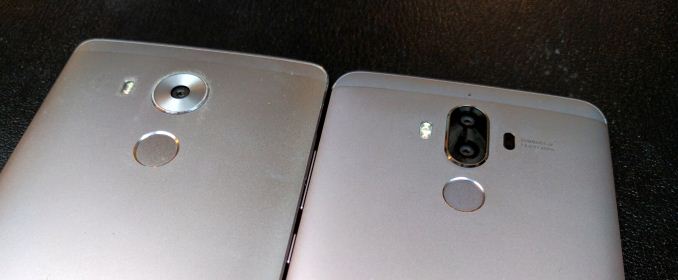




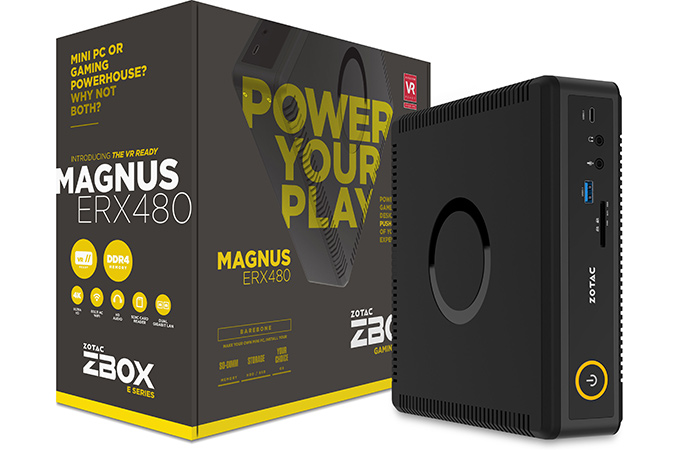
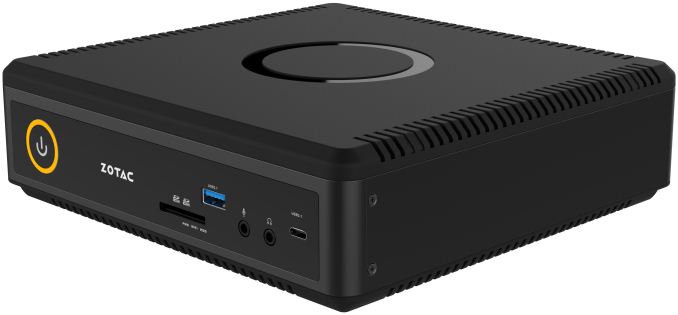
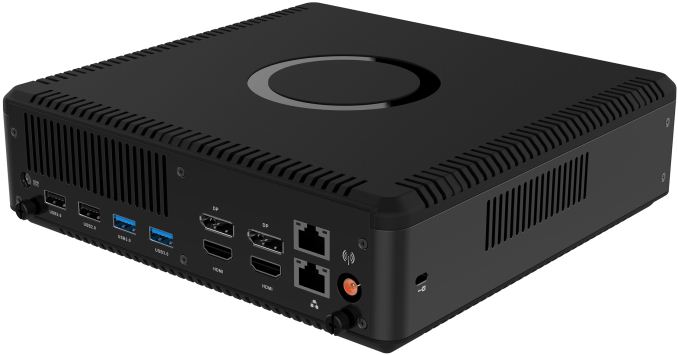
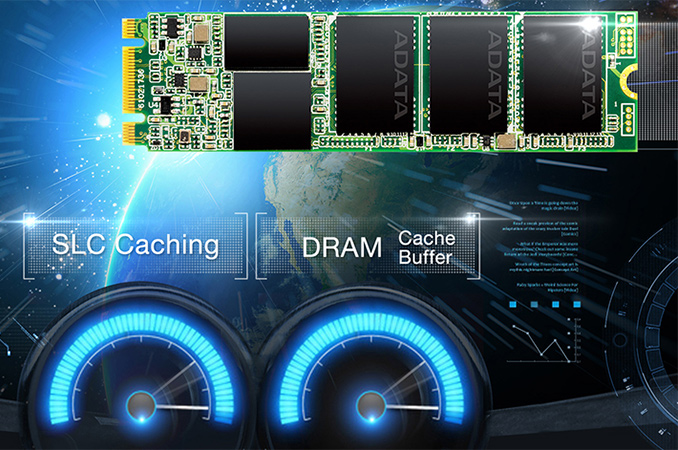
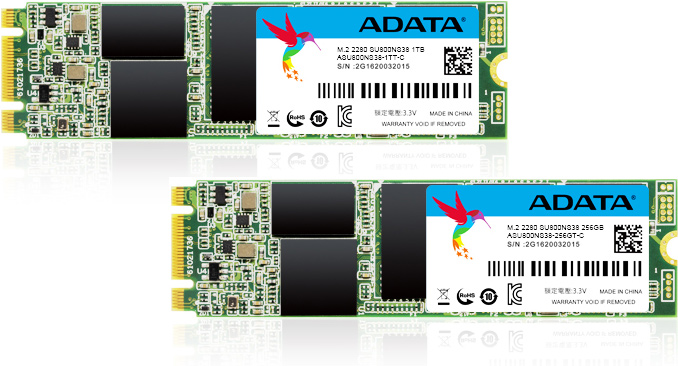




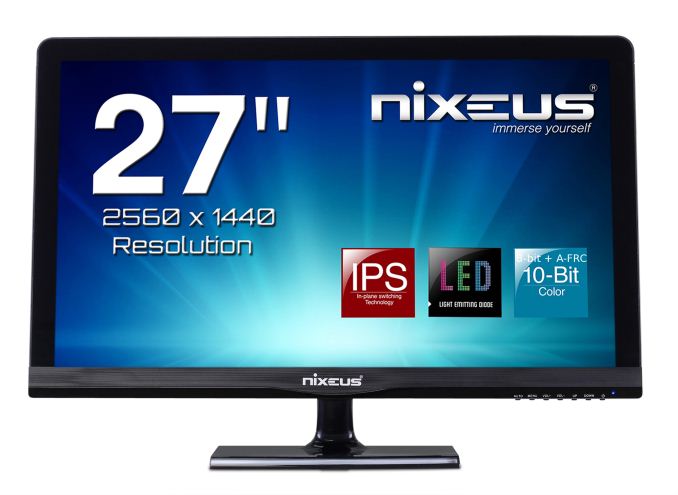


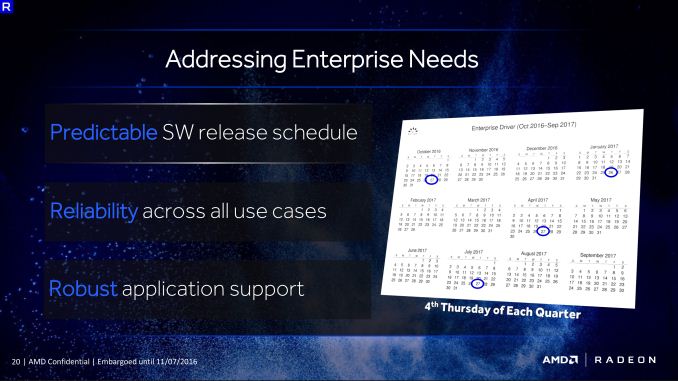
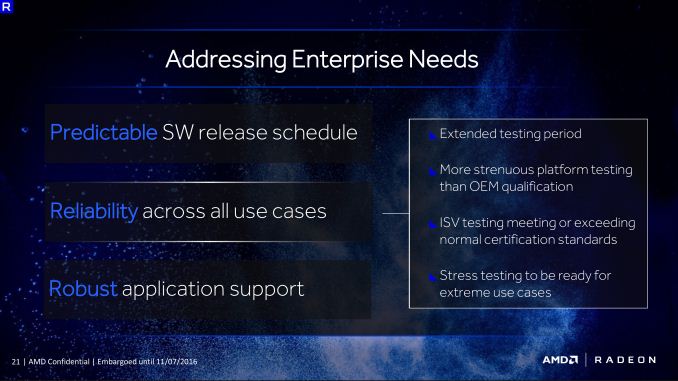






















Bookmarks